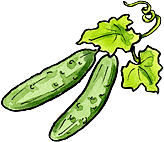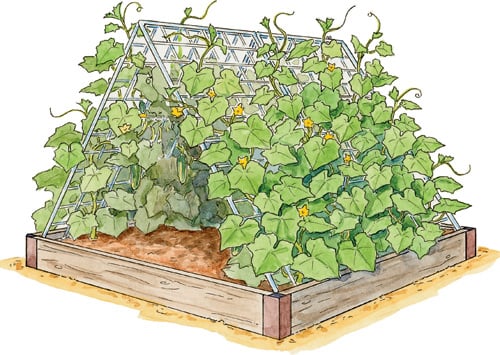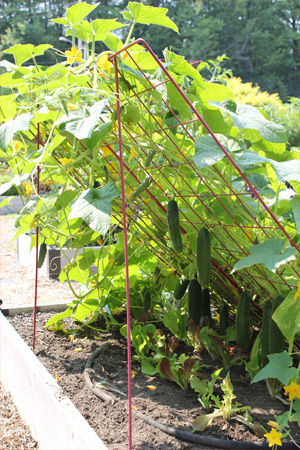How to Grow Cucumbers

Cukes are the ultimate low-calorie snack: Juicy and refreshing, you can eat all you want without gaining weight because they are more than 95 percent water.
Cukes are hot-weather plants. They hate cold soil and cold weather. The soil should be at least 65 degrees, preferably 70 degrees, when planting. In warm parts of the country you can put seeds directly into the ground; in short-season areas, you should start seedlings indoors a couple weeks before putting them out into the garden (which should be a week or two after the last spring frost).
If you'll be transplanting seedlings — rather than sowing directly into the garden — remember that young cucumber plants transplant best. They resent having their roots disturbed, so avoid touching the roots when planting them into the garden. Use a biodegradable pot to reduce transplant shock.
The striped cucumber beetle is a serious problem in many areas. Outdoors, a newly germinated seedling can be devoured overnight. Starting cucumbers indoors gives them a little time to toughen up before they're under attack.
To avoid cucumber beetle damage, you can cover the plants with garden fabric (row cover). Do this at planting time, before the beetles arrive. Pin down the edges with Earth Staples or with boards or rocks. Since cukes are insect-pollinated, the plants must be uncovered once they start to bloom.
There are two basic types of cukes: bush and vine. Vining cukes typically produce more fruit than the bush varieties. They can be trained up a trellis, which promotes straighter fruit and good air circulation, and minimizes fungal problems in wet summers. The vine stems have little tendrils that wrap themselves around a wire or mesh grid. Unlike peas, cucumber vines usually need a little encouragement before they'll grab hold. You can do this by tying them onto the trellis with plant ties or strips of cloth. Be gentle because the stems are usually quite brittle.
Related
Like many vegetables, the more cucumbers you pick, the more you get. Never let cukes get big and seedy or the plant will assume that its work is done. Although there are varieties listed as pickling cukes and others called slicers, either kind can be pickled or eaten fresh in salads. Be sure the soil stays consistently moist or your cucumbers will be tough and bitter.

The Cucumber Farm is one of several preplanned gardens in our free online Kitchen Garden Planner.
Print this Article:
Get the Dirt
Stay up to date on new articles and advice. Please fill out the information below.

